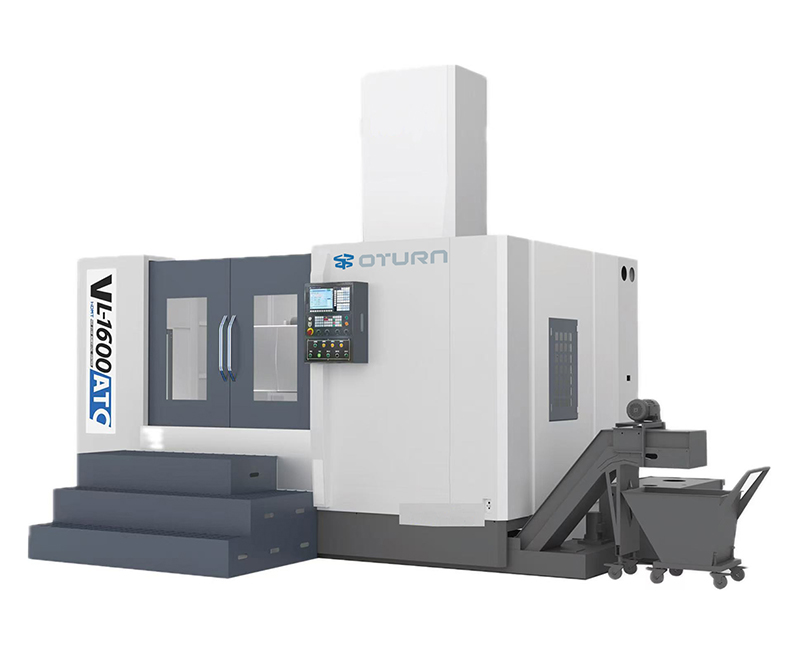In modern manufacturing, precision CNC vertical lathe play an indispensable role. Designed specifically for machining large, heavy workpieces, such as discs and shells, their unique vertical spindle arrangement has made them a core piece of equipment for industries such as automotive, aerospace, energy, and mold & die. During operation, the workpiece is securely held by a suction cup or chuck while the tool swings horizontally for turning. This combines high rigidity, precision, and efficiency, making it an ideal partner for machining heavy parts.
Mastering operation techniques improves machining quality and safety.
To maximize the performance of this “hardcore” equipment, scientific and standardized operation is crucial. Only in this way can we ensure part quality, extend equipment life, and ensure a safe and robust production process.
I. Proper Environmental Preparation and Equipment Preheating
A superior lathe requires an ideal “home.” A workshop environment with a constant temperature, dustproof design, and stable load-bearing capacity ensures stable and uninterrupted operation. After powering on the CNC machine, remember to allow the machine to run for at least 30 minutes to warm up. This allows the spindle, lead screw, and guide rails to stabilize and reduce precision fluctuations caused by thermal expansion and contraction. During this time, also check the hydraulic, lubrication, and cooling systems for adequate pressure to ensure unimpeded circulation.
II. Workpiece Clamping and High-Precision Alignment
The stability of the workpiece can significantly impact the precision of the finished product. Select appropriate vacuum cups, mechanical chucks, or specialized fixtures based on the workpiece’s size and shape to ensure secure and uniform clamping. When aligning, use a dial indicator or laser tool setter to precisely adjust the workpiece’s end and radial runout to within 0.01mm, ensuring flawless finishing. If performing multiple continuous machining steps, ensure consistent datum positioning to ensure accurate repeatability.
III. High-Quality Tool Selection and Strict Clamping
Machining different materials requires meticulous attention to tool selection. Carbide, CBN, and ceramic inserts each have their own advantages, requiring the optimal tool selection for different materials, such as cast iron, steel, or aluminum alloys. When installing the tool, use a dedicated wrench to tighten the tool bar, keeping the overhang as short as possible to prevent vibration from affecting the machining results. After installing the tool, remember to align the tool and set compensation parameters to ensure the tool carves the desired result step by step.
IV. Program Import and Simulation Verification Are Indispensable
Importing the machining program into the CNC system ensures accurate information transfer. Whether using a USB drive, the internet, or manually inputting, after careful verification, be sure to run the program in a simulation to verify the tool path is correct and prevent tool collisions or machining deviations. For complex workpiece structures, select “Single-Segment Run” for a safe and reliable test turn.
V. Proper Parameter Setting and Safe Test Turning
Turning parameters are the pacemaker of machining. For roughing, semi-finishing, and finishing, the spindle speed, feed rate, and depth of turn must be properly set for each stage. For finishing, use a combination of a small depth of turn, high speed, and fast feed to improve surface finish. Start with half the normal parameters for a test turn to confirm that there are no anomalies before gradually increasing them to ensure both the CNC machine and the workpiece are within a safe range.
VI. Monitor the machining process throughout to ensure equipment and personnel safety
During machining, chip shape is a microscopic indicator of chip health. It must be continuous and uniform, with absolutely no chipping or vibration. Closely monitor spindle load, machine temperature, and coolant flow. Immediately stop the machine for investigation if any abnormalities occur. Never open protective doors or take measurements during operation; this is fundamental respect for production safety.
A CNC precision vertical lathe is more than just a collection of hardware; it is a technical art. Only with careful maintenance and scientific operation can it consistently and reliably contribute to superior quality in advanced manufacturing applications such as automotive, aviation, and energy. Do you need specific tips or operating procedures for a particular process? Please contact us for detailed answers.
Post time: Oct-21-2025








